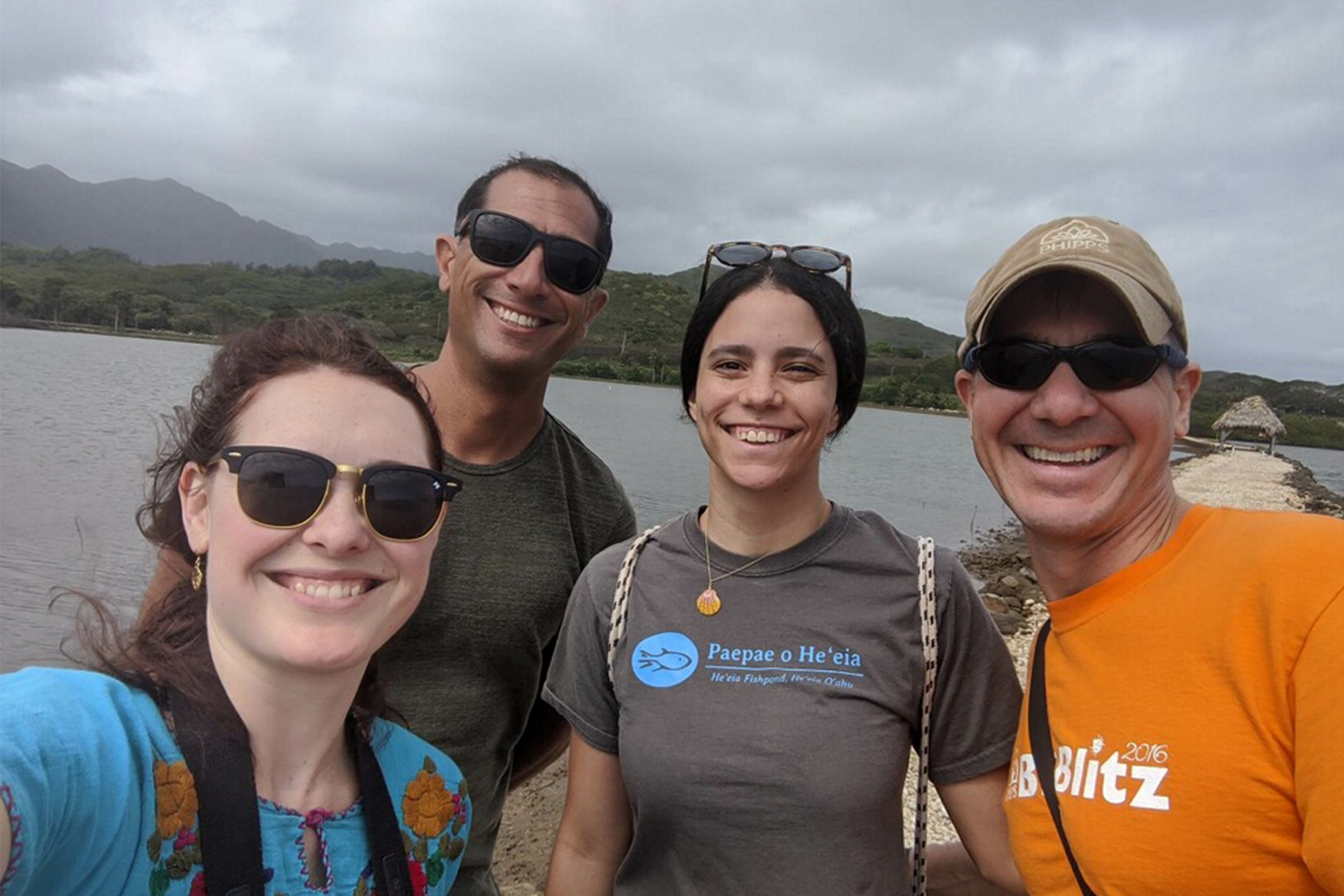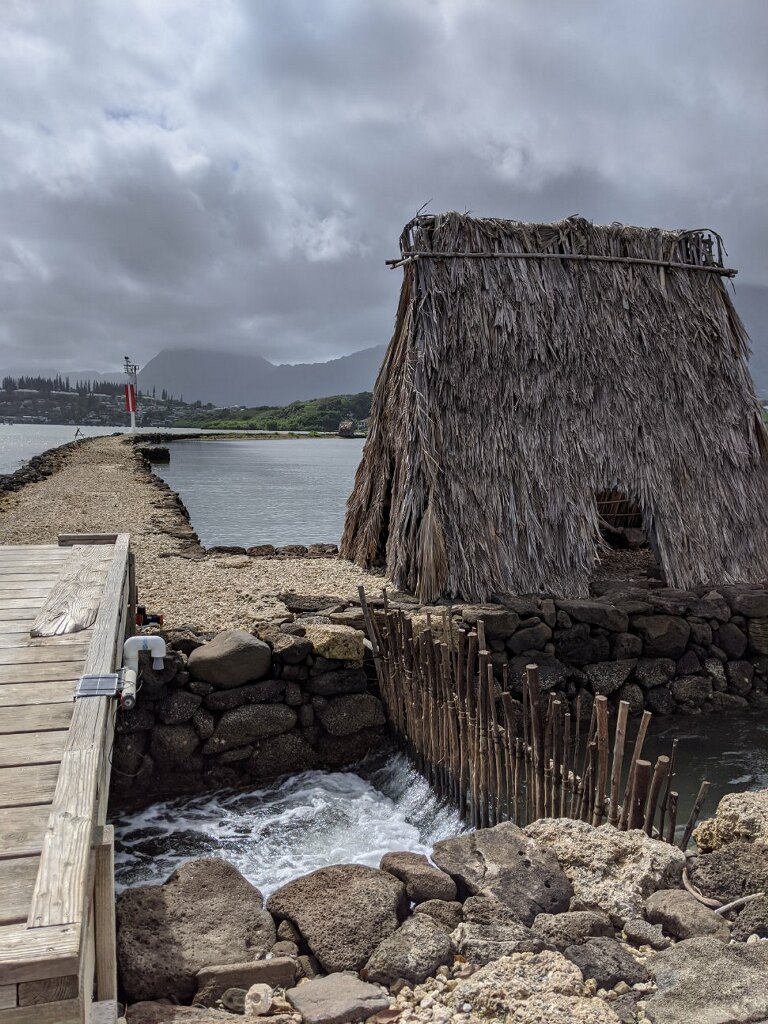Blog

A Rising Tide Lifts All Canoes
As part of the three-year planning and design process behind our upcoming Tropical Forest exhibit, Julianna Razryadov and Adam Haas are traveling to Hawaii to study first-hand the region’s biodiversity hotspots, natural resources and culture. Follow their adventures!
Today was our long anticipated meeting with Dr. Kawika Winter. We headed out to the He’eia Reserve, a conglomerate of eight site partners all conducting different conservation efforts. Kawika arranges government funding for all of them. As he said a couple of times today, "a rising tide lifts all canoes." Kawika led us through a few different projects. The first was probably the most exciting for me — a piece of a stream restoration where mangroves (an aggressive invasive in Hawaii) are being systematically removed and native plants are being reintroduced. One of these native plants is a water fern, an amazing endemic fern that is currently only found in 2 places in Hawaii, so rare that Hawaiians no longer remember its original name. Marsilea villosa looks exactly like four leaf clovers. It was incredibly exciting to be around these plants and even encouraged to touch them and pick one. Hawaiians encourage interaction with nature — reinforcing the perception of humans being a part of nature rather than apart from it.

We continued through the reserve to an actively farmed area primarily consisting of taro fields, and into Pu’ulani (pu means hill and ulani means heaven). Most of the landowners within the reserve are also earning money from the land. This is the essence of biocultural conservation; by using the ecosystem as it functions and manipulating its productivity, the ecosystem continues to function and the people can harvest from it — a rising tide. Hawaii was known as the land of abundance, a fact that allowed people to become skilled artisans because they needed not focus so much energy on growing food. It is shocking, then, to think that over 80% of resources used on these islands are imported, despite the population only being marginally higher now than 250 years ago.
I digress. The Pu’ulani agroforest is developing. The plant that jumps out at you is the Hawaiian white hibiscus (Hibiscus arnottianus). When government officials came to check on the progress of the project, they were shocked that this agroforest actually lacked the agro portion. But it didn’t. This is food for the soul, the land devoted to the divinity of place.
From there it was finally time to visit Paepae o He’eia. This is, according to Kawika, Hawaii’s "sexiest" restoration project. Fishponds used to be all over Hawaii, at the base of the ahupua’a — a land division marking a watershed — at the entrance to the kai (or sea). These walled ponds function in a way to increase the concentration of fish within its walls while making it very easy to fish them out. The function of the ecosystem is served rather than impoverished. This fishpond is being restored completely by hand, a way to feel the land and understand the small things while building something so big.

We have been taking a lot from this place – we have been taking stories, taking pictures, taking seeds, taking it all in. Next it was time to give a little back to this land, this aina. We went to Papahanakuaola, a biocultural restoration site replanting natives along the stream banks, growing taro and other canoe crops, and providing educational programming. We were there weeding the stream bank. Though we were there to give, the land gave us a lot more. It was a revitalizing experience, a warm day with cool breezes rolling off of the stream.

We were invited to take a dip in the watering hole, an invitation we ecstatically accepted!
Select photos © Julianna Razryadov and Paul g. Wiegman

